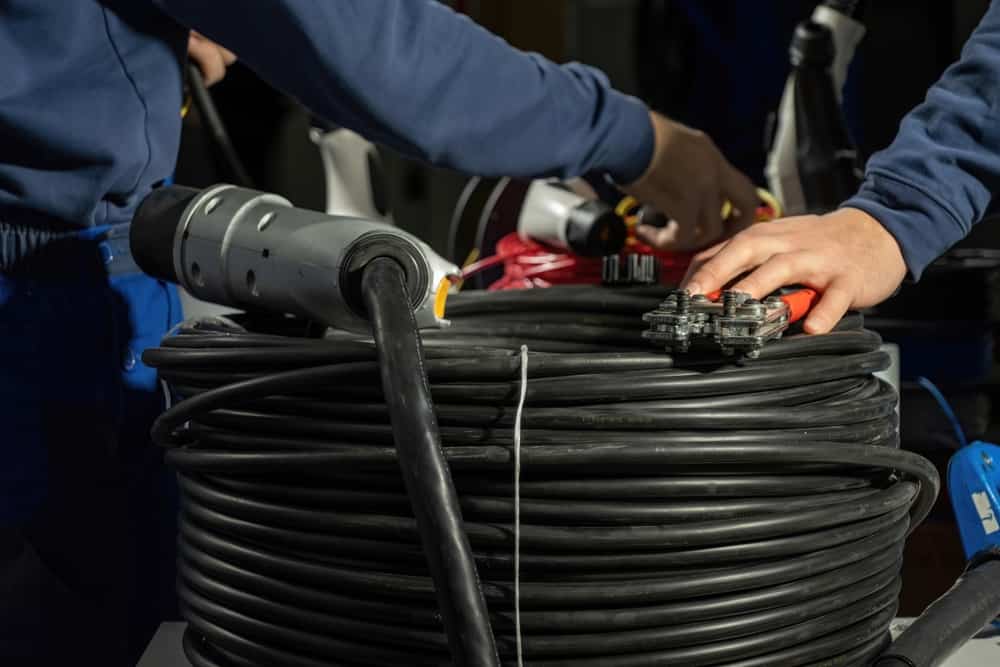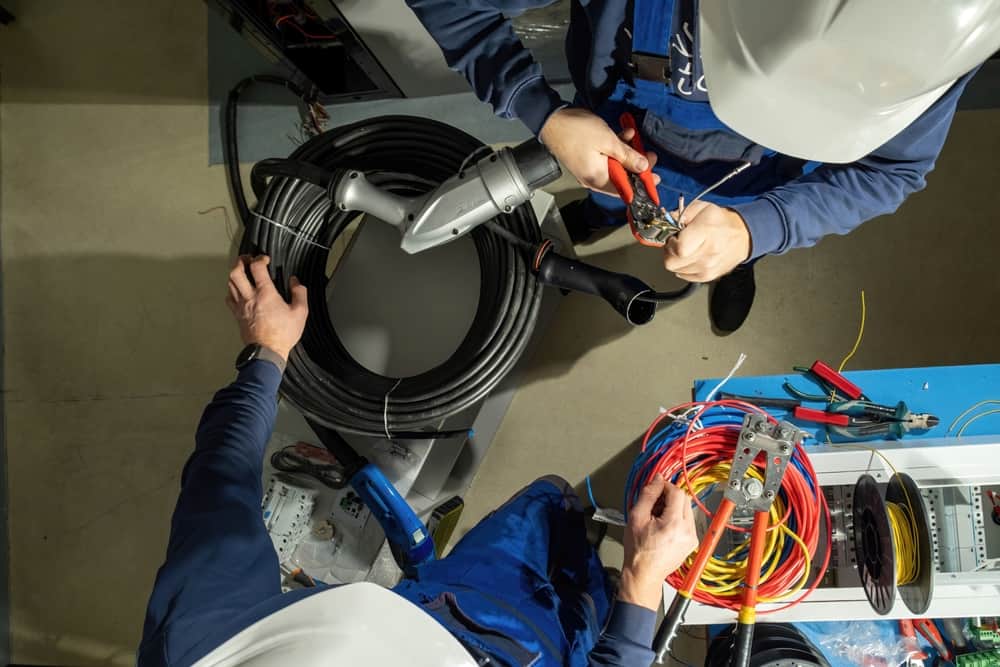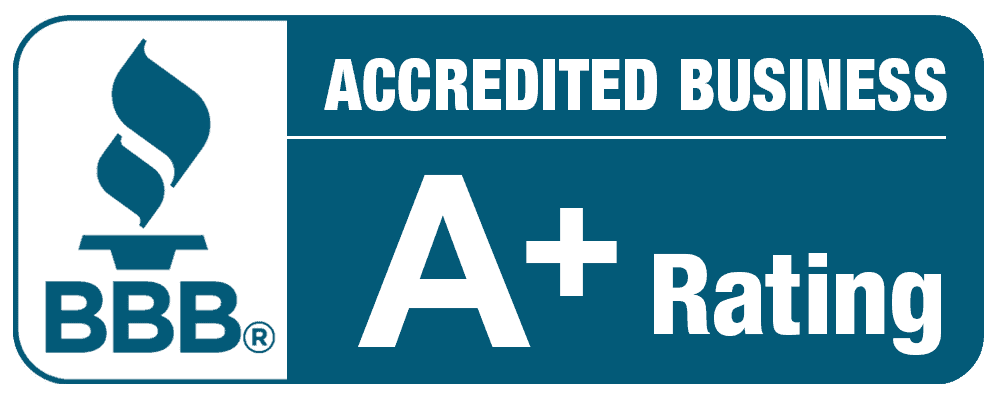Long Island's First Choice For Electrical Contractors
- I found Fielack Electric on accident, while following one of their trucks in traffic through town. I happened to be in the process of bidding an outdoor lighting project and thought I would give them a call for an "extra" bid. Little did I know, Adam and his crew would turn out to be one of the best electrical contractors I have dealt with on Long Island. We were very happy with the result of the project. Fielack went above and beyond by coming back to replace some fixtures that went out shortly after install, due to a manufacturer defect, at no additional charge. We are looking forward to having them back for our next project and would certainly recommend Fielack Electric to anyone in need of electrical repair/contracting services.read moreread lessAnthonyFielack Electric just finished installing my pool filter/heater/lights/timer and more. They were very profession and did a very neat job. Everything worked and we did not need them to come back to fix anything. I would highly recommend this company for any electrical project you need done and I'm sure I will use them in the future.read moreread lessRichard Bloom
- Hire this company for sure! I hired them numerous times. Consistently very professional and pleasant . They explain specifically what they are doing on the job and why so it’s all clear - especially when they have to trouble shoot an issue. Especially when it comes to electric, I feel my house is safe with their experience and expertise. Adam is great, cares about his customers and trains his teams well !read moreread lessDonna SirianniI highly recommend Fielack Electric for electrical work. I wanted to have a good number of "Ring Security Devices" installed around my house. I did this on several service calls. They do top notch professional work. The professional workers Jim, Mat, Steve and Fermin were so professional, kind, patient and wanted to please the customer very much. They even explained questions I had about their electrical work for the Ring Security Floodlight Cams. Adam was very kind in setting up the service calls and giving me price quotes so their would be no surprises.So if you are looking for great electricians, call Fielack Electric.Very satisfied Customer,John of Long Islandread moreread lessMusic Videos
- We just moved in to our home and need a lot of electrical work done. We have used Fielack a long time ago and had a great experience. We scheduled a small portion of the work with them and I was not disappointed. Jim came to our house and worked on our pool wiring. He was meticulous and very informative about the work he was doing. I highly recommend this company.read moreread lessCherie KaraptisOnce again I needed some electrical work done at my house. And without hesitation i called Fielack Electric. The two gentlemen that came over to do the work; James and Anthony, did a great job! Besides their good work and professionalism they were also both a pleasure to talk to. Job well done! Thanks guys.read moreread lessTony Bonura
- Just had Steve and Fermin here to fix some wiring and add a generator switch panel. They were very professional and thorough. They also went through the process of showing US how to set up the generator so it’s done correctly. Anytime we have an electrical issue that has me scratching my head, we call Fielack.They’re the only ones we’ll call. Very easy to schedule and reasonably priced. They also work quickly.read moreread lessKen KelleherI hired Fielack Electric to install recessed lighting fixtures and a dimmer switch in my home office. The price they gave me was fair and well within my budget. The electricians that did the job, Steve and Matt, were on time and very professional. The job was done quickly and they didn't leave a mess. The lights look great! I'll absolutely call these guys again to do work in my home.read moreread lessDaniel Finson
- I called Fielack after 2 days of being stood up by another company. Adam called me back on the same day and arranged to have an electrican service the house that afternoon. When there was a delay they called back with new time. James (electrican) arrived on time the service took less than an hour. He was professional knowledgable and neat. The price was as quoted. I would definitely use this company againread moreread lessDennis WalkerDavid came 3 days ago with an estimate for 10-12 various jobs. David & Anthony just left after completing the work. Very professional, courteous, & couldn’t be happier with the end result. Beautifully finished & everything was left spotless. Highly recommend. Would use them again in a heartbeat.read moreread lessMichelle RyanHad a hardwired Ring doorbell, Smoke/CO detector, 3 motion lights and whole house Surge Protector installed. Steve and Nick called before they came, got right to work and did a great job. They're coming back to replace a gable fan in the attic. They answered all my questions clearly. We are very satisfied with Fielack Electric and recommend them for all your electrical needs. And don't forget Jim in the office keeping everything straight.read moreread lessDave Hara
Commercial Electrical Contractors
Residential Electrical Contractors
contact us
The Benefits of Professional EV Charger Installation in Levittown, NY

Comprehensive Benefits of Professional EV Charger Installation
In a world swiftly transitioning towards electric vehicles (EVs), efficient, reliable charging solutions become paramount. This is where Fielack Electric shines, offering superior EV Charger Installation services in Levittown, NY. Our belief firmly lies in the fact that a professionally installed EV charger at home can transform the EV ownership experience, adding immense value.
Firstly, the convenience of home-based charging is unmatched. The comfort of waking up each day to a fully charged vehicle, without the need for detours to public charging stations or queuing up for your turn, cannot be understated. Home charging eliminates any range anxiety, providing a seamless, stress-free experience.
Secondly, safety cannot be overlooked. Professional EV Charger Installation ensures that all electrical work, which is complex and meticulous, is handled by certified professionals, thereby mitigating any potential hazards. At Fielack Electric, we strictly adhere to all safety regulations and standards, providing you peace of mind in Levittown, NY and across Nassau County.
Moreover, the installation of a home EV charger can significantly increase your property value. With the global push towards sustainable transport, homes equipped with EV chargers will command higher demand and price.
To delve deeper into the manifold benefits of professional EV Charger Installation and to understand how it can enhance your EV ownership experience, reach out to us at 631-420-1700.
Compliance and Safety Assurance
Optimized Cost and Energy Efficiency
Increased Property Value and Appeal
Transforming Your EV Experience with Professional Charging Station Installation
Opting for professional EV charging station installation from Fielack Electric can significantly elevate your EV ownership experience. Located in Levittown, NY, we aim to ensure that every EV owner can reap the benefits of a home charging station.
Beyond the critical factors of convenience and safety, an expertly installed home EV charger can increase charging efficiency, ensuring optimal performance of your electric vehicle. Our team at Fielack Electric helps you identify the right type of charger for your vehicle, choose the ideal location for installation, and ensure proper setup for maximum efficiency and ease of use.
Additionally, a home charging station allows for flexible charging. You can decide when to charge your EV based on your schedule and electricity tariff, which can potentially lead to cost savings.
And the benefits don’t stop at installation. With Fielack Electric, you receive continued support and guidance. We provide comprehensive after-installation care, answering your questions, and helping you get the most out of your home charging station.
For reliable, professional EV charging station installation, you can trust Fielack Electric. Dial 631-420-1700 to schedule your appointment today.


Leading the Drive towards a Sustainable Future in Nassau County and Beyond
At Fielack Electric, we see ourselves not just as a service provider but as pioneers driving the charge towards a sustainable future in Levittown, NY, and across Nassau County. Through our consistent focus on quality workmanship, commitment to customer satisfaction, and zeal to stay updated with the latest EV technologies, we have established ourselves as a trusted provider of EV Charger Installation services.
When you choose Fielack Electric for your EV charging station installation, you’re choosing to be a part of the green revolution, contributing to a reduction in carbon emissions. But more than that, you’re opting for an enriched EV ownership experience, enjoying the multitude of benefits that come with having a personal charging station.
Let’s drive together towards a cleaner, greener, and more sustainable future for Levittown, NY, and beyond. Choose Fielack Electric for all your EV
charging station installation needs and join us on this journey into the future. Call 631-420-1700 now and take the first step towards reaping the benefits of professional EV Charger Installation.
Have a question?
The building firm, Levitt & Sons, headed by Abraham Levitt and his two sons, William and Alfred, built four planned communities called “Levittown”, in New York, Pennsylvania, New Jersey, and Puerto Rico; the Levittown in New York was the first. Additionally, Levitt & Sons’ designs are featured prominently in the older portion of Buffalo Grove, Illinois; Vernon Hills, Illinois; Willingboro Township, New Jersey; the Belair section of Bowie, Maryland; and the Greenbriar section of Fairfax, Virginia.
The Levitt firm began before World War II, as a builder of custom homes in upper middle-class communities on Long Island. During the war, however, the home building industry languished under a general embargo on private use of scarce raw materials. William “Bill” Levitt served in the Navy in the Seabees – the service’s construction battalions – and developed expertise in the mass-produced building of military housing using uniform and interchangeable parts. He was insistent that a postwar building boom would require similar mass-produced housing, and was able to purchase options on large swaths of onion and potato fields in undeveloped sections of Long Island.
Returning to the firm after war’s end, Bill Levitt persuaded his father and brother to embrace the utilitarian system of construction he had learned in the Navy. With his brother, Alfred, who was an architect, he designed a small one-floor house with an unfinished “expansion attic” that could be rapidly constructed and as rapidly rented to returning GIs and their young families. Levitt & Sons built the community with an eye towards speed, efficiency, and cost-effective construction; these methods led to a production rate of 30 houses a day by July 1948.They used pre-cut lumber and nails shipped from their own factories in Blue Lake, California, and built on concrete slabs, as they had done in a previous planned community in Norfolk, Virginia. This necessitated negotiating a change in the building code, which prior to the building of this community, did not permit concrete slabs. Given the urgent need for housing in the region, the town agreed. Levitt & Sons also controversially utilized non-union contractors in the project, a move which provoked picket lines. On the other hand, they paid their workers very well and offered all kinds of incentives that allowed them to earn extra money, so that they often could earn twice as much a week as elsewhere. The company also cut out middlemen and purchased many items, including lumber and televisions, directly from manufacturers. The building of every house was reduced to 26 steps, with sub-contractors responsible for each step. His mass production of thousands of houses at virtually the same time allowed Levitt to sell them, with kitchens fully stocked with modern appliances, and a television in the living room, for as little as $8,000 each (equal to $92,721 today), which, with the G.I. Bill and federal housing subsidies, reduced the up-front cost of a house to many buyers to around $400 (equal to $4,636 today).
Learn more about Levittown.Local Resources
Useful links for Levittown, NY
Useful Links
Here are some electrician-related links:










